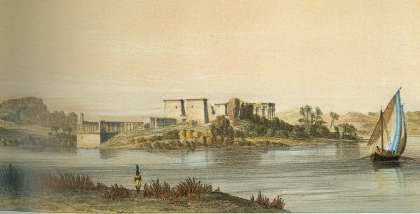|
|
|
|
Other Archaeological Sites / The Neolithic of the Levant (500 Page Book Online) McDonald Ancient Near East Book Auction Ad Infinitum Egyptian Art and Civilization Selected Excerpt on Egypt
Winner of the 1993 Best Scholarly Book in Archaeology In the Nile Valley shortly before 3000 BC appeared the first nation-state in the world, adorned with all the sophisticated trappings of civilization. Permanence and changelessness were the hallmarks of the ancient Egyptian way of life: language - script - religion and iconography of this Nilotic civilization during the time of Christ had changed rather less than might have been expected from the period of its inception three thousand years earlier. The Kingdom of the Two Lands seemed immutable ......

Egyptian Art: The Metropolitan
Egyptian Art in the Age of the Pyramids This young woman's oval and fairly flat face is strikingly reminiscent of similar countenances found in works from the Third Dynasty. In fact the voluminous tripartite wig sitting heavily on the high shoulders and the central parting of the natural hair on the forehead date this statue securely to the very beginning of the Fourth Dynasty --- making it one of the most beautiful female images of its time. The nameless woman's smooth facial features - delicate neck - small rounded shoulders - extremely high waist - sculptured hips and full breasts combine with the translucency of the stone to create what was certainly an image of ideal female beauty during the period ...... |